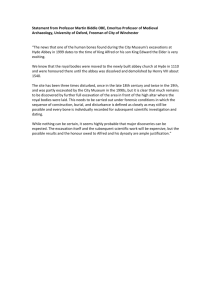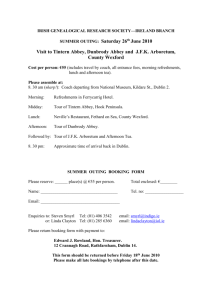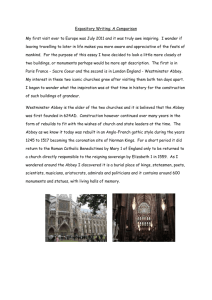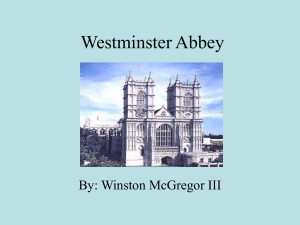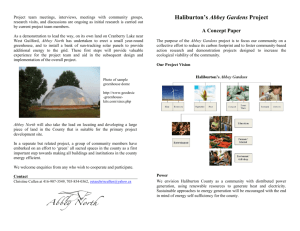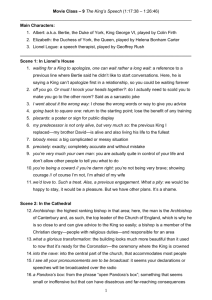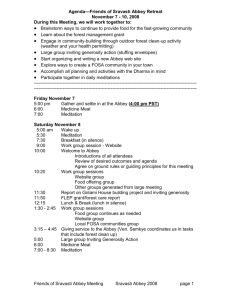HISTORY KS 2 - Dorchester Abbey
advertisement
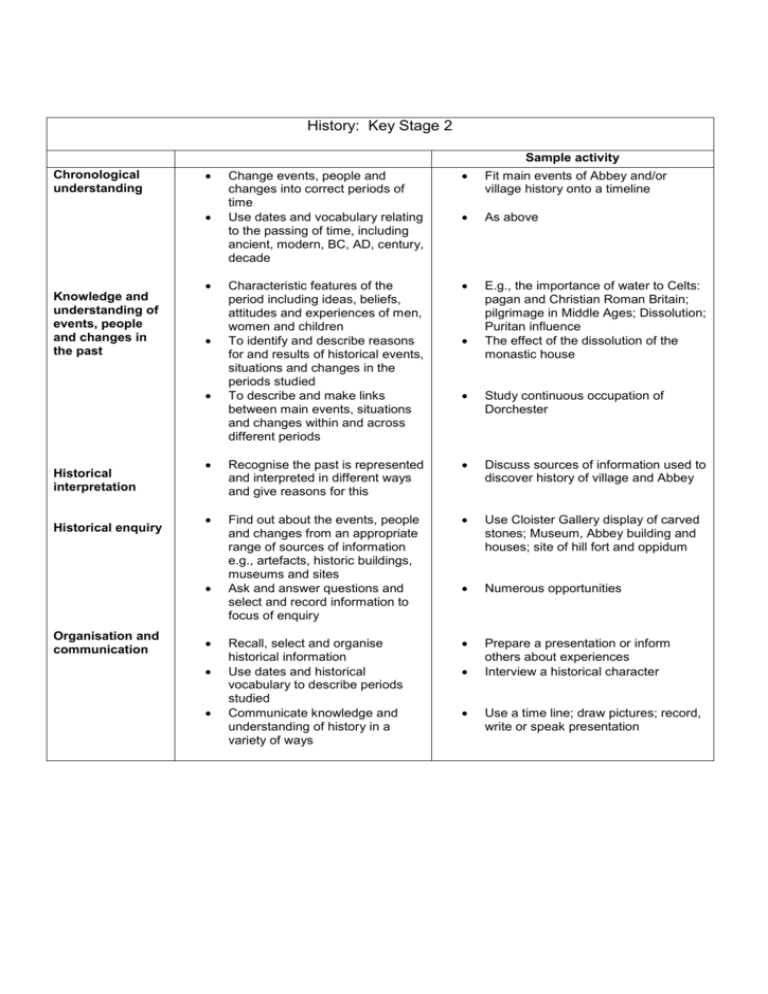
History: Key Stage 2 Sample activity Chronological understanding Change events, people and changes into correct periods of time Use dates and vocabulary relating to the passing of time, including ancient, modern, BC, AD, century, decade Fit main events of Abbey and/or village history onto a timeline As above Characteristic features of the period including ideas, beliefs, attitudes and experiences of men, women and children To identify and describe reasons for and results of historical events, situations and changes in the periods studied To describe and make links between main events, situations and changes within and across different periods E.g., the importance of water to Celts: pagan and Christian Roman Britain; pilgrimage in Middle Ages; Dissolution; Puritan influence The effect of the dissolution of the monastic house Study continuous occupation of Dorchester Recognise the past is represented and interpreted in different ways and give reasons for this Discuss sources of information used to discover history of village and Abbey Find out about the events, people and changes from an appropriate range of sources of information e.g., artefacts, historic buildings, museums and sites Ask and answer questions and select and record information to focus of enquiry Use Cloister Gallery display of carved stones; Museum, Abbey building and houses; site of hill fort and oppidum Numerous opportunities Recall, select and organise historical information Use dates and historical vocabulary to describe periods studied Communicate knowledge and understanding of history in a variety of ways Prepare a presentation or inform others about experiences Interview a historical character Knowledge and understanding of events, people and changes in the past Historical interpretation Historical enquiry Organisation and communication Use a time line; draw pictures; record, write or speak presentation

